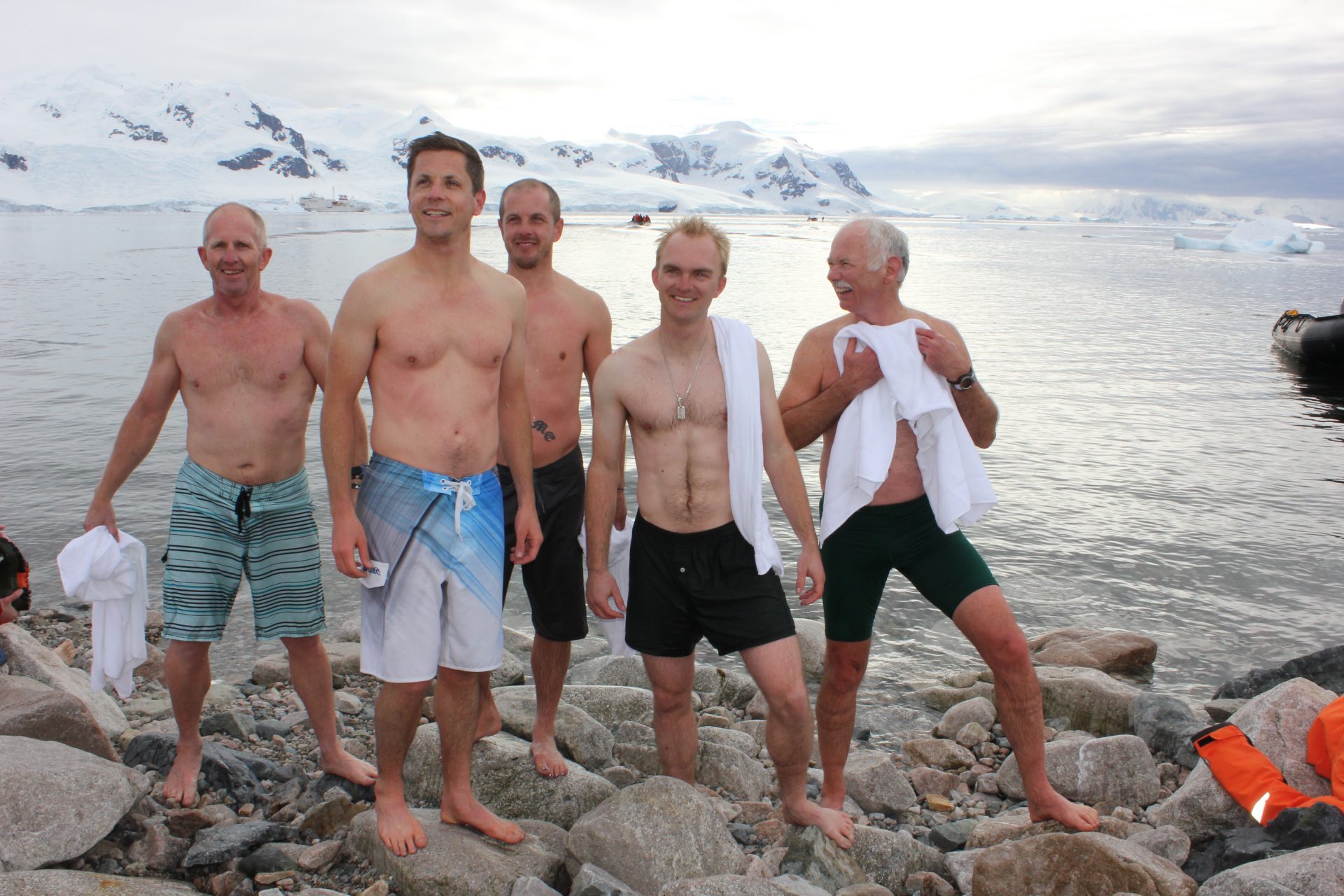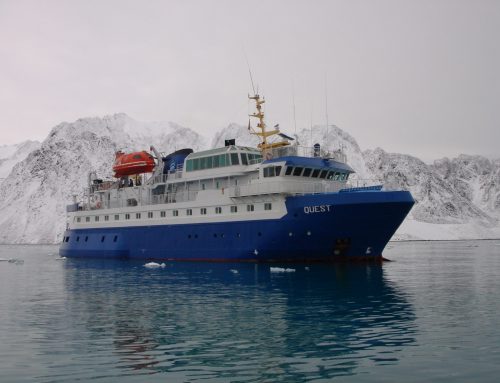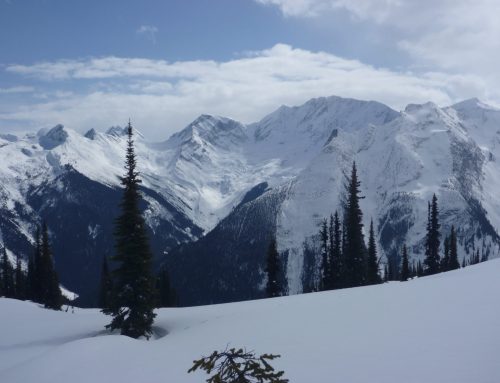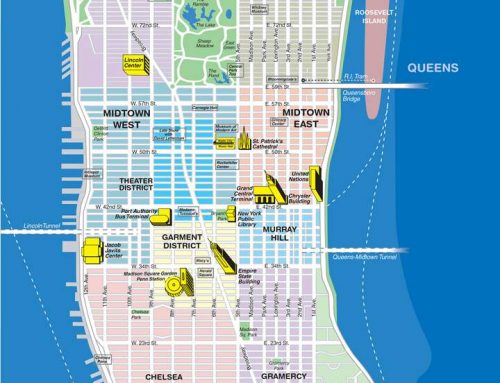Human response to cold has always fascinated me. I’ve studied and written about hypothermia for medical journals. Adhering to the rich scientific tradition of personal bioassay through self-experimentation, I’ve spent plenty of time in snow and freezing air but have now adopted a taste for cold water as well.
My first true polar plunge occurred near the end of a circumnavigation of Svalbard on a Polar Quest cruise aboard the M/V Quest. I’d previously experienced a few quick plunges into the Atlantic in winter, some summer surf sessions in the ever chilling Pacific off Northern California and more than sufficient unplanned swims while winter white water kayaking in the Pacific Northwest. I had even experienced the systemic collapse following a poorly timed alpine lake plunge prior to a climb of Yosemite’s Half Dome in the mid 1970s. Onset of severe symptoms necessitated an unpleasant down climb and rappel of some 700’ off the route and 24 hours prostrate in a hastily pitched tent. I learned something about camping in bear country on that one as well. Hard not to when a bear claws apart your in search of treats then later absconds with your poorly rigged food stash!
I had no intention of joining the exuberant Swedes taking the plunge that summer afternoon in 2008. I was serving as ship doctor and was there at the gangway, AED in hand. The non-Swedish passengers, mostly British, were aghast at the prospect and fretted about medical calamities thwarting their vacations. Fueled by peppermint Schnapps, twenty or so middle-aged Scandinavians jumped into the -1.6C water one at a time tethered by a rope tied around their naked waists. All emerged smiling although no one could even climb the three steps of the gangway ladder without two or three people hoisting them aboard.
Then the 68 y/o retired urologist was yoked in, ran the gangway and executed a perfect forward somersault into the water yodeling all the while. I had to try this. Most wondered if the vessel would have to return to port with the doctor out of commission. I assured myself competent medical personnel were present and knew CPR and AED use, then tied in. And jumped.
Things I recall: the sensation of the brash ice on bare skin, the complete inability to initiate muscular activity (including breathing) and the reassuring tug of the rope returning me to air.
It was an impulsive and possibly risky undertaking for an old man. We’d made a number of mistakes in our approach as I later learned. Yet I was driven to undertake a Seven Summits approach to polar plunges and study the science along the way. And also to safely introduce and expose people to this exhilarating activity in a structured manner.
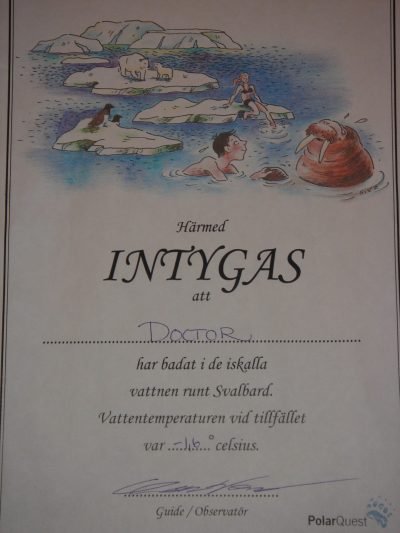
Doctor’s First “Polar Plunge” Certificate (2008)
I’ve now participated in ten or so “polar plunges” aboard expedition cruise ships in the high latitudes while serving as ship doctor. Locales have included the Bering Sea (at the junction of the International Date Line and Arctic Circle), the Canadian Arctic, Svalbard and the Antarctic Peninsula among others. Participants number several hundred in total with ages ranging from 15 to 78 and nationalities from Chinese to South African. There have been no medical events.
Two experts in cold-water science have provided great inspiration as well as knowledge in my pursuit. Professor Popsicle, the maverick and controversial Man from Manitoba, Gordon Giesbrecht practices what he preaches and researches. He’s immersed himself in icy water dozens of times while measuring multiple physiological parameters. He has also run an exceptional university based research lab devoted to cold study for many years.
Professor Mike Tipton of the University of Portsmouth (UK) takes a more measured approach in his studies. He has published extensively in not only the scientific literature but also fields including search & rescue, open water swimming and triathlon training. He too enjoys a cool dip from time to time.
Scientific cold-water research examines the effects of water between 10 and 15C. The governing body of open water competitive swimming does not sanction events below 11C. Ethical concerns and risk limit studies of the human effects of more extreme cold-water immersion. The Nazi atrocities in Dachau enumerated in the Alexander report constitute the extent of knowledge but are rarely cited by the scientific community. As most polar plunges occur in water from -2C to 6C, anecdotal reports such as the above will have to do for the present.
Tipton’s training tips should be required reading for all aspirants. He advocates training the body to better respond to CSR (cold water shock) through progressive exposure to cold water. Those with a cardiovascular history should seek medical clearance first. Enter the water slowly on foot if possible and exit in the same deliberate manner. Do not use intoxicants to foster false courage.
Fully informed and prepared participants can assure that this activity will remain safe and available for all… as long as the oceans remain cold. There is no scientific evidence of any health benefit but various cultures have developed long traditions of cold-water exposure, most often with a ready heat source nearby.

Mosier, Oregon January, 2015
Here’s a recent article (Jan, 2020) which nicely combines an analysis of the physiology & the addictive, cultish aspects of “cold plunges”:
https://www.newyorker.com/magazine/2020/01/27/the-subversive-joy-of-cold-water-swimming

